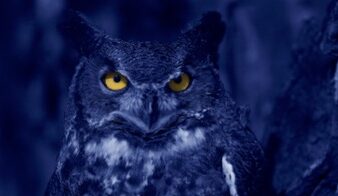Why We Need Skills for Happiness – and Why 30×30 Is the Time to Learn Them
We spend years in school learning math, biology, and history, but very few of us are ever taught the actual […]
Read complete blog >>
The conscious and unconscious are terms used in psychology to describe different layers of the mind. The thoughts, feelings and behaviours we notice and are aware of are a part of our conscious mind. The unconscious mind holds a vast amount of richness that is outside our awareness. It contains memories, feelings, intuition, and dreams that actively influence how we experience the world.
The unconscious is divided into the personal and collective unconscious. The personal unconscious is unique to each individual. It holds experiences we have forgotten, ignored or pushed away. This may include, for example, relational patterns from our early childhood that we are not aware of, but which nonetheless impact our adult relationships.
All human beings share the collective unconscious, regardless of their cultural background. We inherit it from our forefathers and foremothers. The shared deep inner world communicates through archetypal images, myths and symbols. For example, our dreams contain similar images and symbols, such as trees, gold and horses. A tree often symbolizes life and growth, gold can refer to something valuable, and a horse may reflect life force, instinct or freedom.
The more we can bring our unconscious processes to conscious awareness and integrate them into our identity, the more we mature and grow into our whole selves. In therapy, increased awareness of what we have not previously seen or understood about ourselves and our experiences leads to personal growth, change, and healing.
Some people live primarily in the conscious space. Some professions require a firm hold of the material world, such as the banking and aviation industries. Other people find themselves in the liminal space between the conscious and the unconscious. They may come across as misfits, spiritually attuned, but may also be artists, teachers, healers and midwives.
In Jungian psychology, the medial archetype embodies the ability to access material in the collective unconscious and bring it to the conscious world. This ability is strong in some people. They may have inherited the ability to see the unseen, be sensitive to archetypal energies, or they may be introverted intuitives.
It is easy to dismiss stories, fairy tales and legends as children's entertainment. However, these ancient stories, which have often been around for hundreds of years, did not start as stories just for children. They were for everyone. And, they are still for everyone. Old stories can help us connect with our collective unconscious. They reveal something about what it means to be human and how we live our lives.
For example, on the surface level, Cinderella may seem like a simple story about a young woman who had to endure hardship before she could marry a prince. In a symbolic sense, we can say there is a Cinderella in every woman. Most women can relate to experiences of being unseen, devalued, or oppressed. The story offers hope to girls and women that if they can protect their inner strength and dignity, they may one day be able to express this part of themselves.
Clarissa Pinkola Estés, a Jungian analyst, believes that individuals who can access the collective unconscious nurture our conscious world with empathy and creativity. In Mother Night, a collection of stories narrated by Pinkola Estés, she asks,
'Where do the ideas come from? Do they come from the well-behaved? Where do great endeavours come from? Do they come from the people who obey all the minutiae of life? No, they don't. They come from the edges. They come from the frontiers.'
We can all learn to access more unconscious material. Aging itself often leads us to turn more inward, allowing us to get to know ourselves more deeply. We can also cultivate this awareness by engaging with our dreams. Paying attention to your dreams and keeping a dream journal. You can revisit the dream when awake and journal about the images, symbols, feelings and thoughts it brings up. Allow yourself to dream while awake as well. Let your thoughts roam and see what arises.
Meditating, spending time in nature, sitting in silence, and creating without intention can also allow information from deep within to emerge. You can also let stories, legends, myths, poems, art, films and even computer games act as bridges to the unconscious. What is stirred in you? Engage with what catches your attention and deepen the connection. Imagine a different ending; continue the story, even if you don't understand. Let of go having to do something right, or to even know what you are doing. Allow yourself to be and explore with curiosity and openness.
When we connect to the unconscious, we can nurture our creativity. We learn to treat ourselves with more understanding and kindness. It also allows us to see, feel, hear, and listen to others deeply, understanding them with compassion and mercy.
You can find Mother Night on Sounds True.
Articles on www.hoopfull.com may feature advice and are for informational purposes only. It is not intended to be a substitute for medical advice, diagnosis or treatment from a trained professional. In an emergency, please seek help from your local medical or law enforcement services.
Keep up to date with the Hoopfull community.

We spend years in school learning math, biology, and history, but very few of us are ever taught the actual […]
Read complete blog >>
Our standard of living has improved physically and materially. Life expectancy has increased. Healthcare, housing, education, infrastructure, and human rights […]
Read complete blog >>
You have gone through years of training at a university or training institute. You have learned about the human psyche, […]
Read complete blog >>